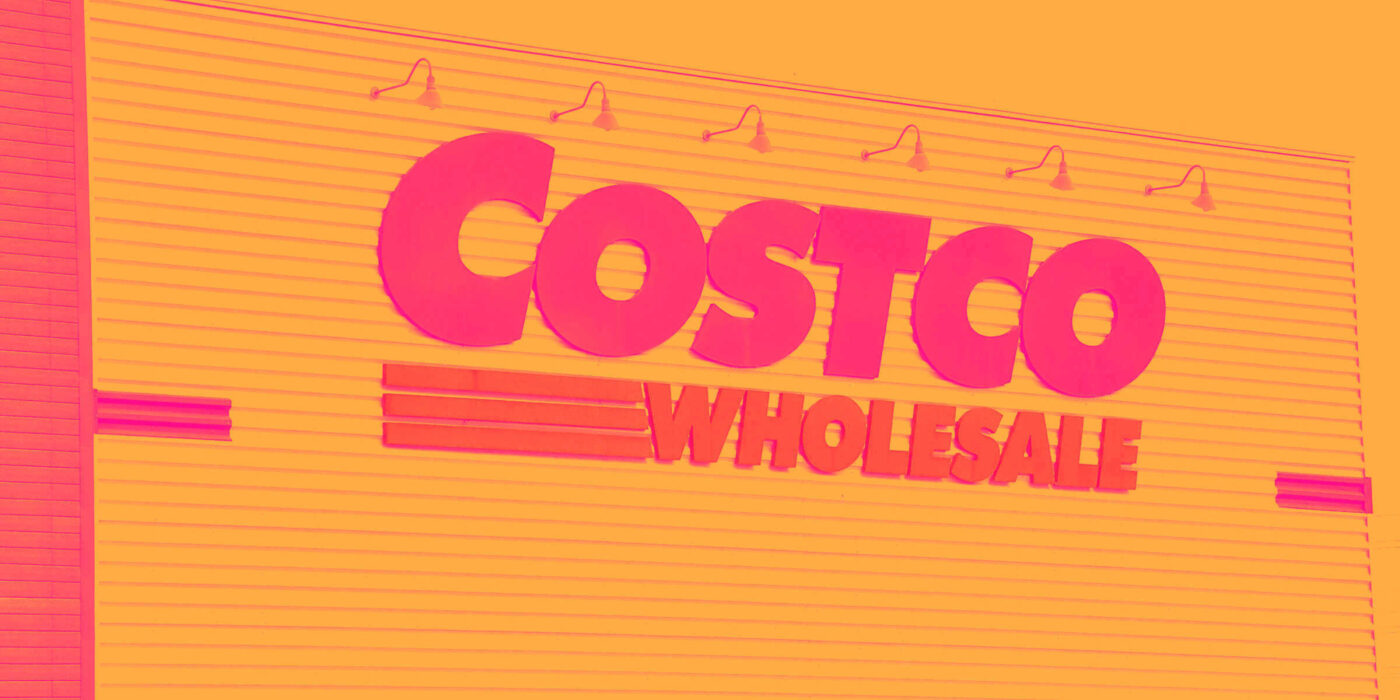Membership-only discount retailer Costco (NASDAQ:COST) fell short of analysts' expectations in Q2 FY2024, with revenue up 5.7% year on year to $58.44 billion. It made a GAAP profit of $3.92 per share, improving from its profit of $3.30 per share in the same quarter last year.
Costco (COST) Q2 FY2024 Highlights:
- Revenue: $58.44 billion vs analyst estimates of $59.13 billion (1.2% miss)
- EPS: $3.92 vs analyst estimates of $3.61 (8.5% beat)
- Free Cash Flow was -$300 million, down from $2.30 billion in the same quarter last year
- Gross Margin (GAAP): 12.5%, in line with the same quarter last year
- Same-Store Sales were up 5.8% year on year
- Store Locations: 875 at quarter end, increasing by 27 over the last 12 months
- Market Capitalization: $343.1 billion
Designed to be a one-stop shop for the suburban consumer, Costco (NASDAQ:COST) is a membership-only retail chain that sells groceries, apparel, toys, and household items, often in bulk quantities.
The company is well known for offering these products at lower prices than most of its competitors. Costco is able to offer low prices due to its lean operating model that prioritizes low overhead costs and high inventory turnover. If you walk into a Costco store, the products are presented in a warehouse format, stacked high and with many products still sitting in their original boxes and palettes, rather than neatly presented as individual packages on shelves. This reduces store labor costs.
Costco's core customer is the value-conscious suburban shopper who is willing to buy in bulk to save money. These customers must pay for an annual membership, as non-members are not allowed to enter Costco locations. On the other hand, consumers living in cities often do not frequent Costco because their smaller homes or apartments cannot accommodate that 64-roll package of toilet paper.
In addition to groceries, electronics, and apparel, Costco also offers other consumer services so their customers don’t have to go elsewhere. Pharmacies, photo centers, and vision services/eyeglass retailers are common in their roughly 150,000 square foot stores. Outside the majority of Costco stores, there is also a gas station for quick and convenient fill ups.
Large-format Grocery & General Merchandise Retailer
Big-box retailers operate large stores that sell groceries and general merchandise at highly competitive prices. Because of their scale and resulting purchasing power, these big-box retailers–with annual sales in the tens to hundreds of billions of dollars–are able to get attractive volume discounts and sell at often the lowest prices. While e-commerce is a threat, these retailers have been able to weather the storm by either providing a unique in-store shopping experience or by reinvesting their hefty profits into omnichannel investments.
Competitors that offer groceries and/or other general merchandise in large-format stores include BJ’s Wholesale Club, Walmart (NYSE:WMT), and Kroger (NYSE:KR).Sales Growth
Costco is a behemoth in the consumer retail sector and benefits from economies of scale, an important advantage giving the business an edge in distribution and more negotiating power with suppliers.
As you can see below, the company's annualized revenue growth rate of 11.1% over the last five years was decent as it opened new stores and grew sales at existing, established stores.
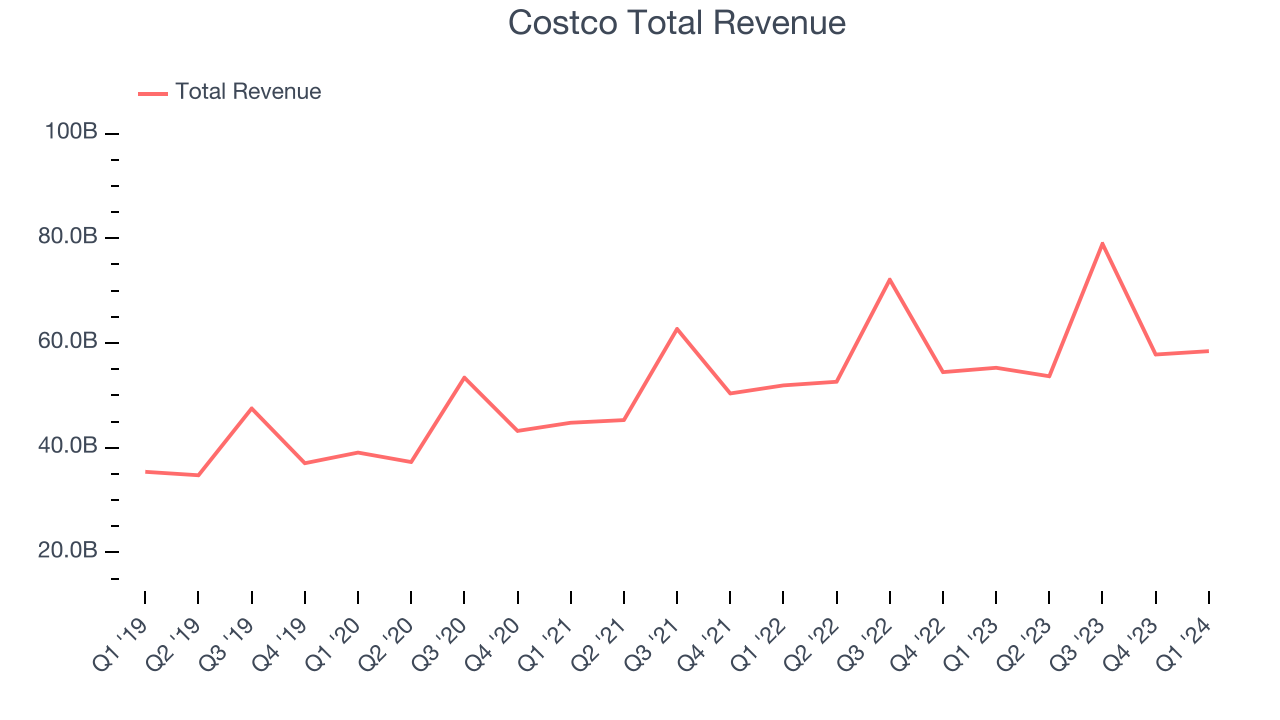
This quarter, Costco's revenue grew 5.7% year on year to $58.44 billion, missing Wall Street's expectations. Looking ahead, Wall Street expects sales to grow 5.9% over the next 12 months, an acceleration from this quarter.
Number of Stores
A retailer's store count is a crucial factor influencing how much it can sell, and store growth is a critical driver of how quickly its sales can grow.
When a retailer like Costco is opening new stores, it usually means it's investing for growth because demand is greater than supply. Since last year, Costco's store count increased by 27 locations, or 3.2%, to 875 total retail locations in the most recently reported quarter.
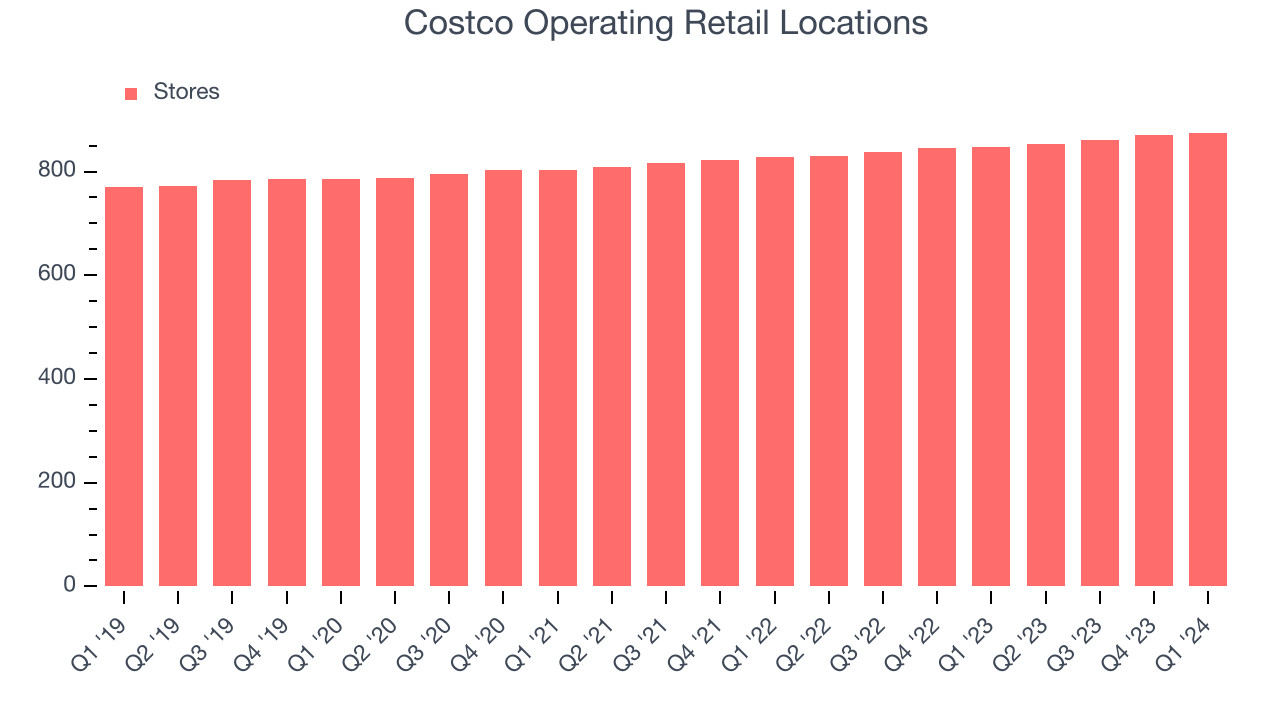
Over the last two years, the company has generally opened new stores and averaged 2.7% annual growth in its physical footprint, which is decent and on par with the broader sector. With an expanding store base and demand, revenue growth can come from multiple vectors: sales from new stores, sales from e-commerce, or increased foot traffic and higher sales per customer at existing stores.
Same-Store Sales
Costco's demand within its existing stores has generally risen over the last two years but lagged behind the broader consumer retail sector. On average, the company's same-store sales have grown by 6.4% year on year. With positive same-store sales growth amid an increasing physical footprint of stores, Costco is reaching more customers and growing sales.
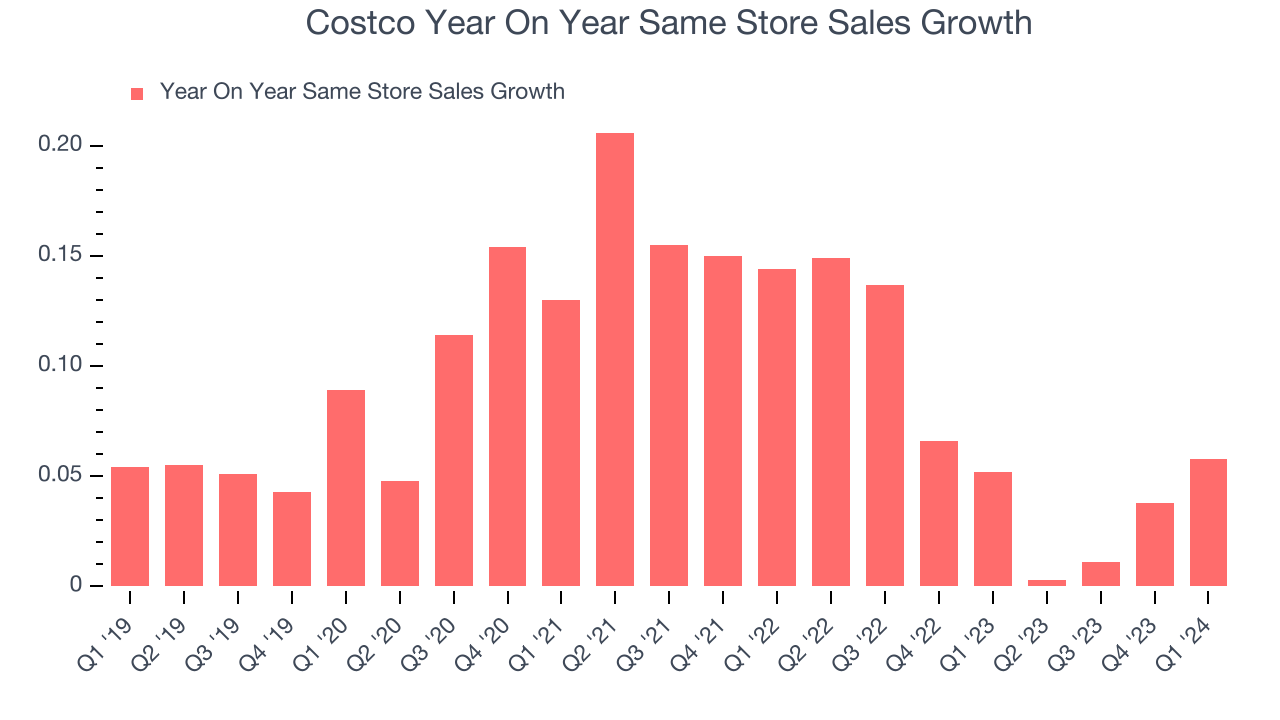
In the latest quarter, Costco's same-store sales rose 5.8% year on year. This performance was more or less in line with the same quarter last year.
Gross Margin & Pricing Power
Costco has poor unit economics for a retailer, leaving it with little room for error if things go awry. As you can see below, it's averaged a 12.3% gross margin over the last two years. However, when comparing its margin specifically to other non-discretionary retailers, it's actually pretty decent. That's because non-discretionary retailers have structurally lower gross margins as they compete to provide the lowest possible price, sell products easily found elsewhere, and have high transportation costs to move their goods. We believe the best metrics to assess these types of companies are free cash flow margin, operating leverage, and profit volatility, which take their scale advantages and non-cyclical demand characteristics into account.
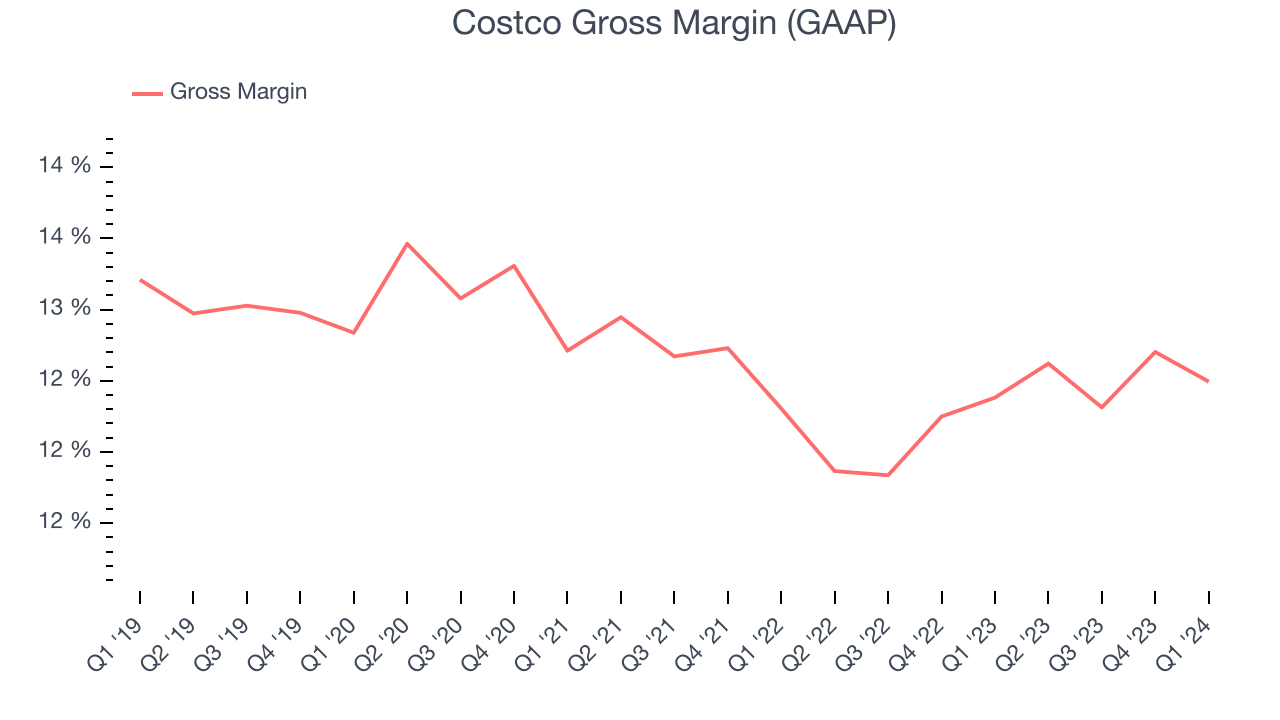
Costco's gross profit margin came in at 12.5% this quarter, flat with the same quarter last year. This steady margin for a retailer like Costco, which is structurally less profitable than the typical retail business for the reasons mentioned above, signals that it has stable input costs (such as freight expenses to transport goods) and aims to keep prices low for consumers.
Operating Margin
Operating margin is an important measure of profitability for retailers as it accounts for all expenses keeping the lights on, including wages, rent, advertising, and other administrative costs.
In Q2, Costco generated an operating profit margin of 3.5%, in line with the same quarter last year. This indicates the company's costs have been relatively stable.
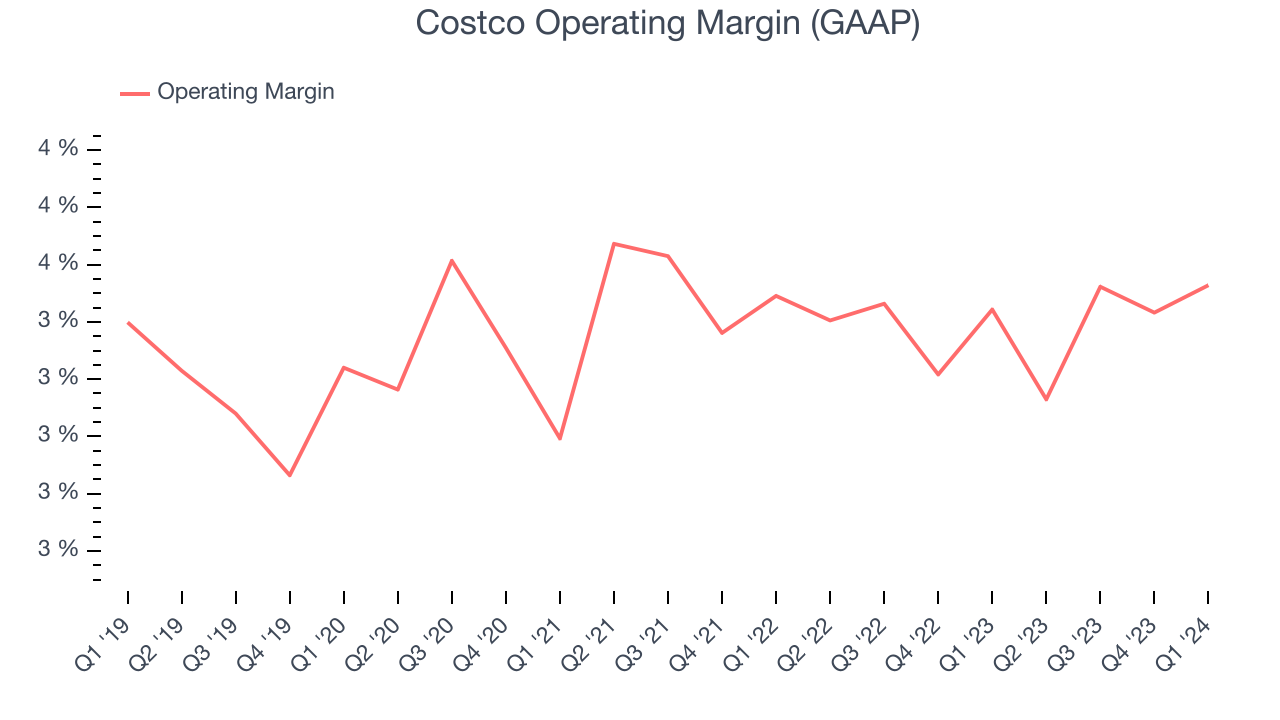 Zooming out, Costco was profitable over the last two years but held back by its large expense base. Its average operating margin of 3.4% has been paltry for a consumer retail business. Its margin has also seen few fluctuations, meaning it will take a big change to improve profitability.
Zooming out, Costco was profitable over the last two years but held back by its large expense base. Its average operating margin of 3.4% has been paltry for a consumer retail business. Its margin has also seen few fluctuations, meaning it will take a big change to improve profitability.EPS
Earnings growth is a critical metric to track, but for long-term shareholders, earnings per share (EPS) is more telling because it accounts for dilution and share repurchases.
In Q2, Costco reported EPS at $3.92, up from $3.30 in the same quarter a year ago. This print beat Wall Street's estimates by 8.5%.
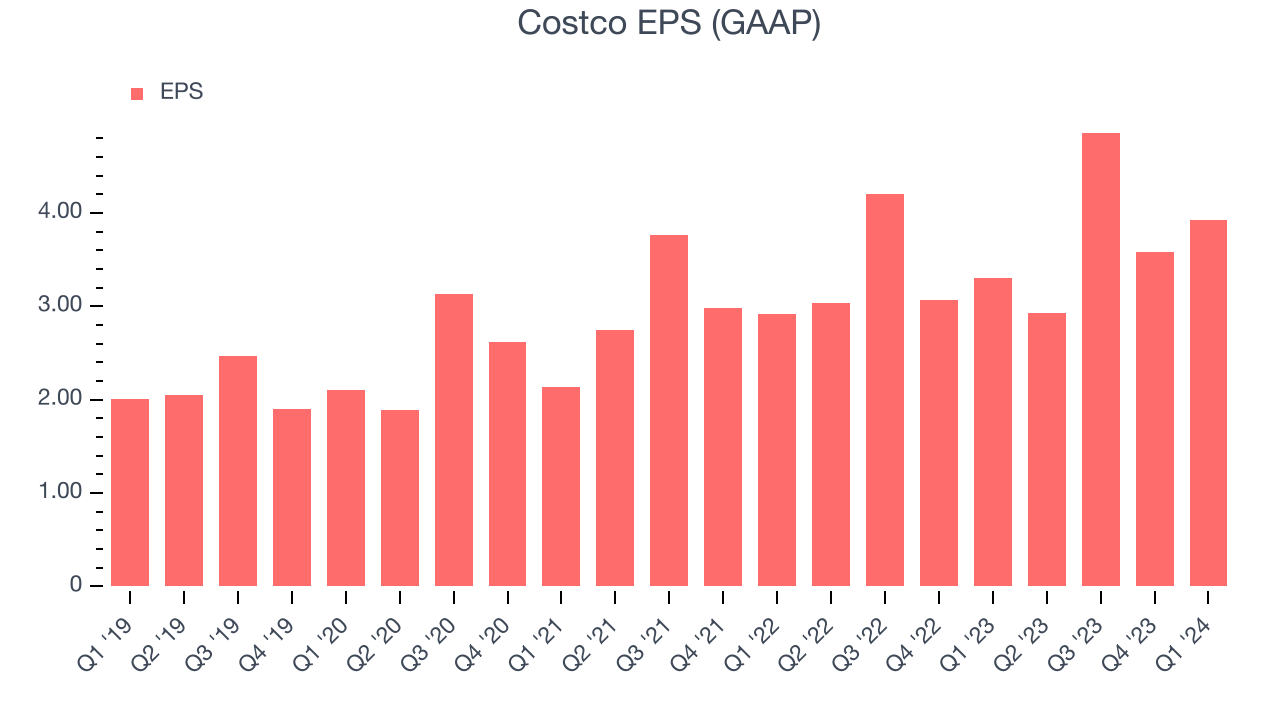
Wall Street expects the company to continue growing earnings over the next 12 months, with analysts projecting an average 7.4% year-on-year increase in EPS.
Cash Is King
If you've followed StockStory for a while, you know that we emphasize free cash flow. Why, you ask? We believe in the end, cash is king, and you can't use accounting profits to pay the bills.
Costco broke even from a free cash flow perspective in Q2. The company's margin regressed this quarter as it was 4.7 percentage points lower than in the same period last year.
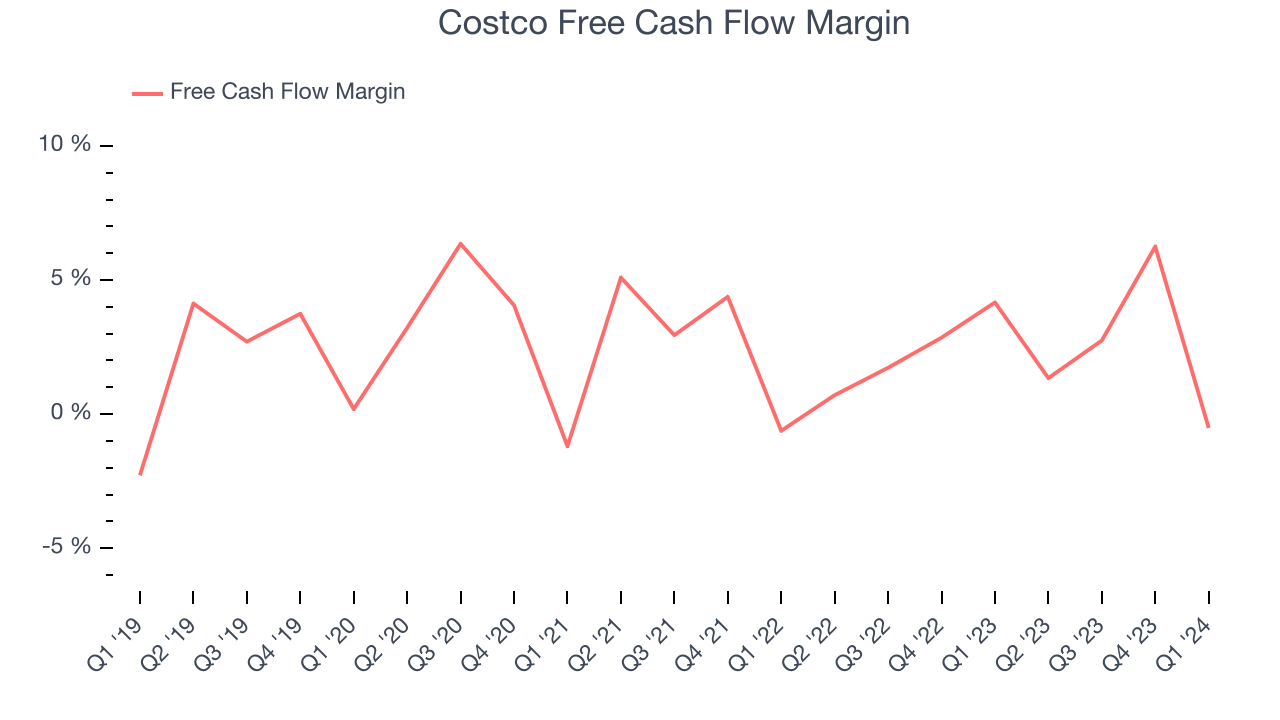
Over the last two years, Costco has shown decent cash profitability, giving it some reinvestment opportunities. The company's free cash flow margin has averaged 2.4%, slightly better than the broader consumer retail sector. Furthermore, its margin has been flat, showing that the company's cash flows are relatively stable.
Return on Invested Capital (ROIC)
EPS and free cash flow tell us whether a company was profitable while growing revenue. But was it capital-efficient? A company’s ROIC explains this by showing how much operating profit a company makes compared to how much money the business raised (debt and equity).
Costco's five-year average ROIC was 32.3%, placing it among the best retail companies. Just as you’d like your investment dollars to generate returns, Costco's invested capital has produced excellent profits.
The trend in its ROIC, however, is often what surprises the market and drives the stock price. Over the last two years, Costco's ROIC averaged 3.1 percentage point increases each year. The company has historically shown the ability to generate good returns, and its rising ROIC is a great sign. It could suggest its competitive advantage or profitable business opportunities are expanding.
Key Takeaways from Costco's Q2 Results
We were impressed by how significantly Costco blew past analysts' gross margin and EPS expectations this quarter. On the other hand, its revenue unfortunately fell short. Overall, we think this was a mixed quarter considering fellow retail peer Walmart (NYSE:WMT) beat Wall Street's sales estimates convincingly. Investors were likely expecting better top-line numbers from Costco, and the stock is down 4.3% after reporting, trading at $752 per share.
Is Now The Time?
Costco may have had an underwhelming quarter, but investors should also consider its valuation and business qualities when assessing the investment opportunity.
We think Costco is a solid business. First off, its revenue growth has been decent over the last five years. And while its gross margins make it more challenging to reach positive operating profits compared to other consumer retail businesses, its stellar ROIC suggests it has been a well-run company historically. On top of that, its coveted brand awareness makes it a household name consumers consistently turn to.
Costco's price-to-earnings ratio based on the next 12 months is 47.6x. There are definitely things to like about Costco and there's no doubt it's a bit of a market darling, at least for some investors. But when considering the company against the backdrop of the consumer landscape, it seems there's a lot of optimism already priced in. We wonder if there are better opportunities elsewhere right now.
Wall Street analysts covering the company had a one-year price target of $709.64 per share right before these results (compared to the current share price of $752).
To get the best start with StockStory, check out our most recent stock picks, and then sign up to our earnings alerts by adding companies to your watchlist here. We typically have the quarterly earnings results analyzed within seconds of the data being released, and especially for companies reporting pre-market, this often gives investors the chance to react to the results before the market has fully absorbed the information.
